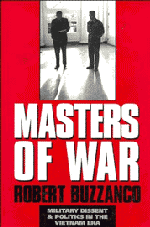Book contents
- Frontmatter
- Contents
- Acknowledgments
- List of Abbreviations
- 1 Introduction: Losing Battles and Winning Wars
- 2 Prologue to Tragedy: U.S. Military Opposition to Intervention in Vietnam, 1950–1954
- 3 Preparing for and Avoiding War: Military Affairs and Politics in Vietnam and the United States, 1955–1960
- 4 Pinning Down the President: JFK, the Military, and Political Maneuvering over Vietnam, January-October 1961
- 5 The Best and Worst of Times: The U.S. War against Vietnam, October 1961–November 1963
- 6 “Seeing Things Through in Vietnam”: LBJ, the Military, and the Growing U.S. Commitment to Vietnam, November 1963-December 1964
- 7 Hope for the Best, Expect the Worst: U.S. Ground Troops Enter the Vietnam War, January-July 1965
- 8 War on Three Fronts: U.S. Forces versus the Viet Cong, Westmoreland versus the Marines, and Military Leaders versus the White House, July 1965-December 1966
- 9 “The Platform of False Prophets Is Crowded”: Public Hope and Private Despair in Vietnam, 1967
- 10 The Myth of Tet: Military Failure and the Politics of War
- 11 Conclusion: Bringing It All Back Home
- Epilogue: “This Is a Real War”: Military Dissent and Politics after Vietnam
- Bibliography
- Index
10 - The Myth of Tet: Military Failure and the Politics of War
Published online by Cambridge University Press: 05 August 2012
- Frontmatter
- Contents
- Acknowledgments
- List of Abbreviations
- 1 Introduction: Losing Battles and Winning Wars
- 2 Prologue to Tragedy: U.S. Military Opposition to Intervention in Vietnam, 1950–1954
- 3 Preparing for and Avoiding War: Military Affairs and Politics in Vietnam and the United States, 1955–1960
- 4 Pinning Down the President: JFK, the Military, and Political Maneuvering over Vietnam, January-October 1961
- 5 The Best and Worst of Times: The U.S. War against Vietnam, October 1961–November 1963
- 6 “Seeing Things Through in Vietnam”: LBJ, the Military, and the Growing U.S. Commitment to Vietnam, November 1963-December 1964
- 7 Hope for the Best, Expect the Worst: U.S. Ground Troops Enter the Vietnam War, January-July 1965
- 8 War on Three Fronts: U.S. Forces versus the Viet Cong, Westmoreland versus the Marines, and Military Leaders versus the White House, July 1965-December 1966
- 9 “The Platform of False Prophets Is Crowded”: Public Hope and Private Despair in Vietnam, 1967
- 10 The Myth of Tet: Military Failure and the Politics of War
- 11 Conclusion: Bringing It All Back Home
- Epilogue: “This Is a Real War”: Military Dissent and Politics after Vietnam
- Bibliography
- Index
Summary
We suffered a loss, there can be no doubt about it.
Harold K. JohnsonThe light at the end of the tunnel, William Childs Westmoreland's critics would later joke, was a train headed toward the general, and on the night of 29–30 January 1968, it thundered through the RVN. On that date the enemy began its Tet Offensive, a countrywide series of attacks that would in short time effectively signal America's defeat in Vietnam. Coming just months after U.S. officials were so publicly optimistic about the war, the offensive instead validated the previous warnings of so many military officials and precipitated the final stage in the civil-military crisis that had been developing over the years prior to 1968. Militarily, the United States, after three years of intense combat, could not contain the enemy in southern Vietnam. Politically, the American people were no longer willing to support a war without measurable success or without an end in sight. When, on 27 February 1968, Walter Cronkite, broadcasting from Vietnam, urged disengagement from the war “not as victors but as an honorable people who lived up to their pledge to defend democracy, and did the best they could,” it was evident that the United States would not soon or successfully conclude its involvement in Indochina. “If I've lost Cronkite,” the president lamented, “I've lost middle America.” Lyndon Johnson, it went without saying, had lost the war as well.
- Type
- Chapter
- Information
- Masters of WarMilitary Dissent and Politics in the Vietnam Era, pp. 311 - 340Publisher: Cambridge University PressPrint publication year: 1996



